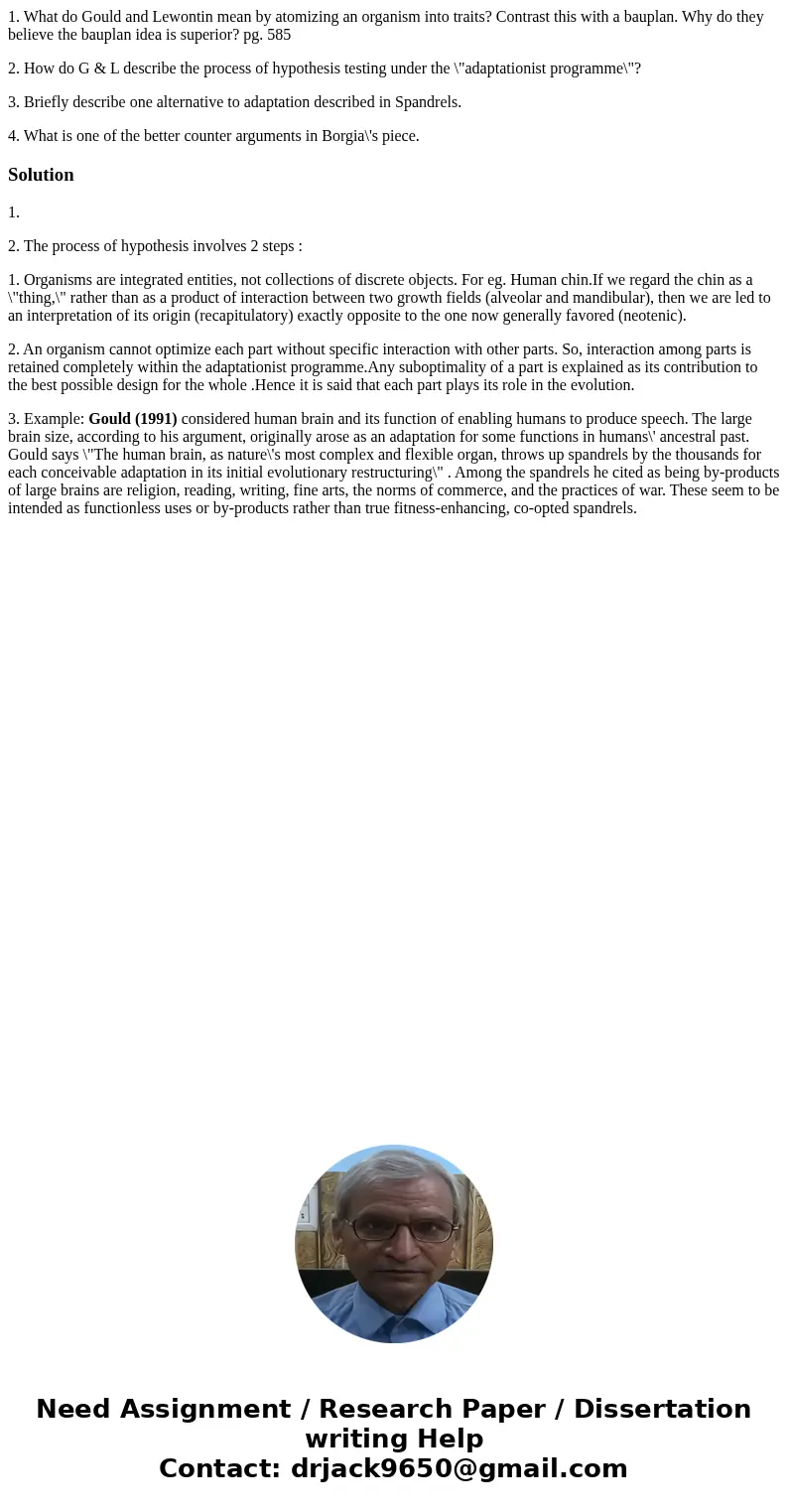1 What do Gould and Lewontin mean by atomizing an organism i
1. What do Gould and Lewontin mean by atomizing an organism into traits? Contrast this with a bauplan. Why do they believe the bauplan idea is superior? pg. 585
2. How do G & L describe the process of hypothesis testing under the \"adaptationist programme\"?
3. Briefly describe one alternative to adaptation described in Spandrels.
4. What is one of the better counter arguments in Borgia\'s piece.
Solution
1.
2. The process of hypothesis involves 2 steps :
1. Organisms are integrated entities, not collections of discrete objects. For eg. Human chin.If we regard the chin as a \"thing,\" rather than as a product of interaction between two growth fields (alveolar and mandibular), then we are led to an interpretation of its origin (recapitulatory) exactly opposite to the one now generally favored (neotenic).
2. An organism cannot optimize each part without specific interaction with other parts. So, interaction among parts is retained completely within the adaptationist programme.Any suboptimality of a part is explained as its contribution to the best possible design for the whole .Hence it is said that each part plays its role in the evolution.
3. Example: Gould (1991) considered human brain and its function of enabling humans to produce speech. The large brain size, according to his argument, originally arose as an adaptation for some functions in humans\' ancestral past. Gould says \"The human brain, as nature\'s most complex and flexible organ, throws up spandrels by the thousands for each conceivable adaptation in its initial evolutionary restructuring\" . Among the spandrels he cited as being by-products of large brains are religion, reading, writing, fine arts, the norms of commerce, and the practices of war. These seem to be intended as functionless uses or by-products rather than true fitness-enhancing, co-opted spandrels.

 Homework Sourse
Homework Sourse